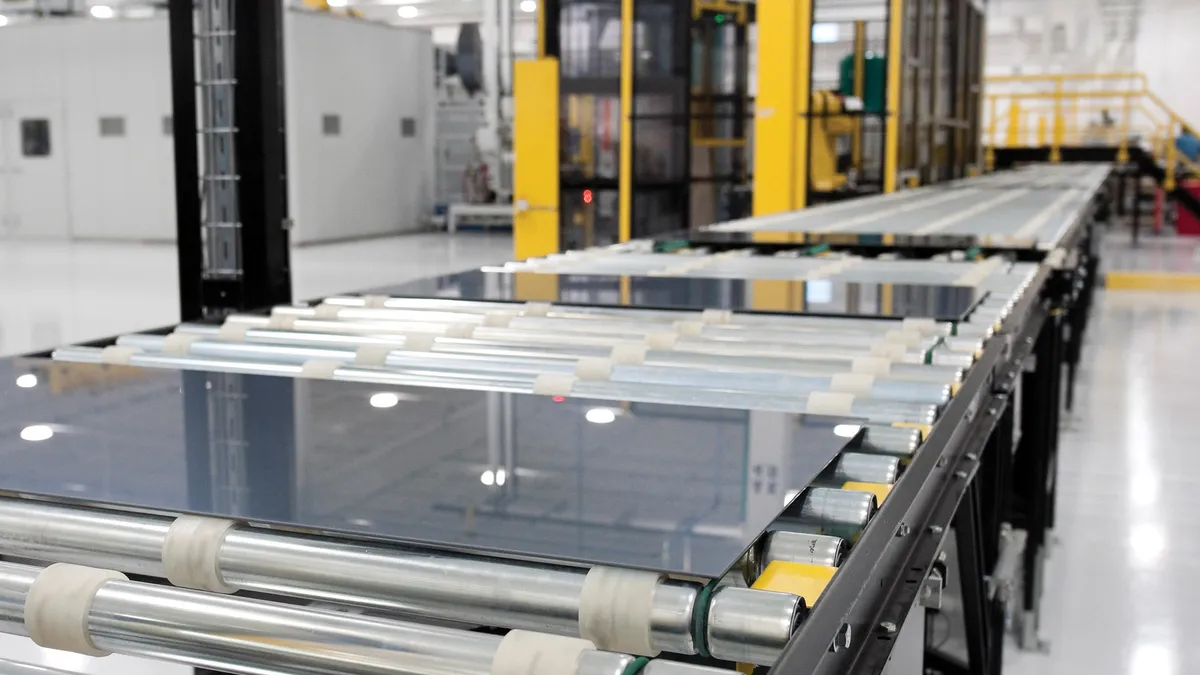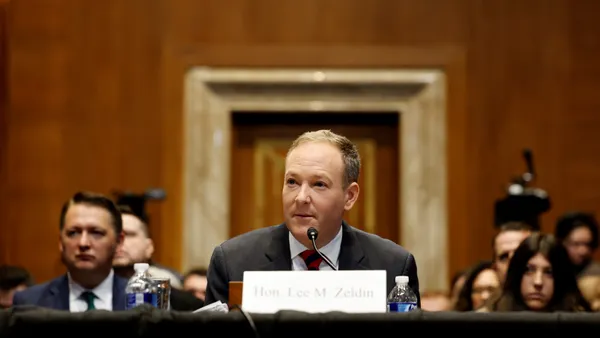Dive Brief:
- First Solar's net sales fell from $3.1 billion in 2019 to $2.7 billion due to delays caused by the pandemic, CEO Mark Widmar explained during a company earnings call on Thursday.
- Despite higher shipping rates, First Solar cut costs by 10% per watt in 2020, and aims to shave off another 11% in 2021, targeting the development of 500-watt modules.
- As the company closes out the sale of its development business, Widmar said First Solar will focus on innovation, cutting costs and improving efficiencies. "As we look into the future with a more focused business model, our pace of innovation will be critical to our competitive strengths," he said.
Dive Insight:
Along with innovation and efficiency, Widmar said First Solar will also look to develop greater resilience in the wake of 2020 and pandemic-related impacts.
Widmar said he was overall pleased with the company's position at the end of 2020, despite a $400,000 decline in net sales compared to 2019. He noted that the final sales tally of $2.7 billion fell within the company's range of projected outcomes, albeit on the low end, and attributed the losses to "unforeseen challenges" that developed as a result of the global pandemic. First Solar suffered factory shutdowns and shipping delays as a result of COVID-19, Widmar said, and customers also delayed their orders due to the pandemic, with at least one customer experiencing an outbreak of the virus at their construction site.
Despite some increased shipping costs, First Solar CFO Alex Bradley said the company grew its gross margins from 18% in 2019 to 25% in 2020, cutting the cost of their modules by 10% per watt year-over-year.
Improved performance has also prompted First Solar to extend its 25-year power output warranty to 30 years, Widmar said, and he indicated that customers and investors can expect more of the same in 2021, as the company completes the sale of its solar development operations and turns its focus to manufacturing and innovation.
Widmar indicated that First Solar has a multi-junction device in early development that he believes could prove to be a disruptive new technology. The Department of Energy defines the theoretical solar technology as something that could significantly increase the amount of electricity generated through panels that capture multiple light wavelengths simultaneously. Beside this, Widmar said, First Solar aims to reduce costs another 11% in 2021 by reducing materials costs by 20-25% and shipping by 15%. Long-term, he said, achieving the company's goal of developing 500-watt solar modules is a critical piece of the company's cost-cutting strategy.
Widmar said the company also aims to expand it's manufacturing capacity, while maintaining the company's emphasis on liquidity. First Solar ended 2020 with $1.5 billion in net cash in the bank. Maintaining a large bank account balance, he said, has proven to be a key competitive advantage for the company by enabling it to weather market turbulence and to self-fund new projects.
"We’ll be able to continue to self-fund future capacity expansion and strategic investments from our technology whilst maintaining a strong differentiated balance sheet," Widmar said, "which we believe is meaningful competitive differentiator."
First Solar expects to ship between 7.8 and 8 GW of solar modules in 2021, totaling $2.85 to $3 billion in net sales. However, Widmar noted that the company has already begun to experience some impacts from the weather crisis in Texas, where customers have rescheduled their orders on account of severe winter weather.














